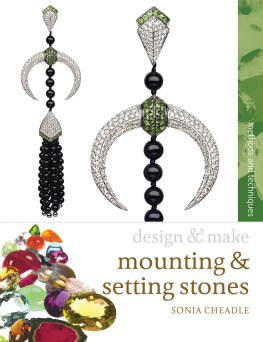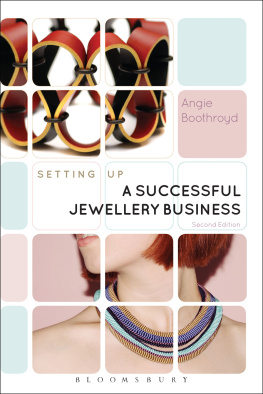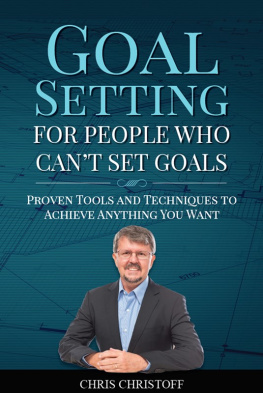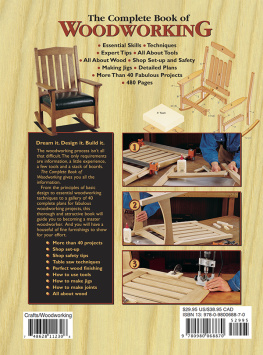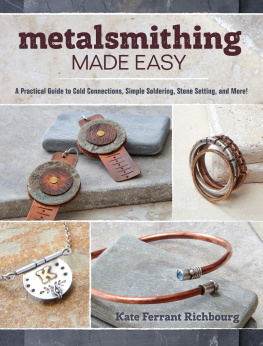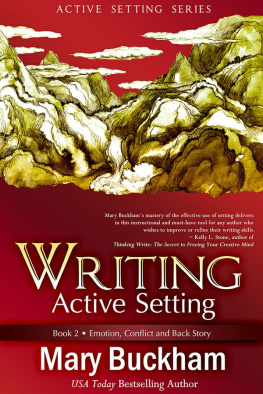


For Florence
ACKNOWLEDGEMENTS
First and foremost I would like to thank all the designer-makers and contributors whose work is featured in this book, and the overwhelming number of people who took the time to send in images; the many offers that went unused are nonetheless much appreciated. Very special thanks go to Leonie, for her steadfast support and red pen encouragement; to Rebecca, for her expertise in CAD; and finally to Tim, for his skill and professionalism at interpreting my scribbles.
DISCLAIMER
Everything written in this book is to the best of my knowledge and every effort has been made to ensure accuracy and safety but neither author nor publisher can be held responsible for any resulting injury, damage or loss to either persons or property. Any further information that will assist in updating of any future editions would be gratefully received. Read through all the information in each chapter before commencing work. Follow all health and safety guidelines and where necessary obtain health and safety information from the suppliers. Health and safety information can also be found on the internet about some products.
HERBERT PRESS
Bloomsbury Publishing Plc
50 Bedford Square, London, WC1B 3DP, UK
29 Earlsfort Terrace, Dublin 2, Ireland
This electronic edition published in 2021 by Bloomsbury Publishing Plc
BLOOMSBURY, HERBERT PRESS and the Herbert Press logo are trademarks of Bloomsbury Publishing Plc
First published in Great Britain 2010
This edition published in Great Britain 2018
Copyright Sonia Cheadle, 2011
Sonia Cheadle has asserted her right under the Copyright, Designs and Patents Act, 1988, to be identified as Author of this work.
All rights reserved
You may not copy, distribute, transmit, reproduce or otherwise make available this publication (or any part of it) in any form, or by any means (including without limitation electronic, digital, optical, mechanical, photocopying, printing, recording or otherwise), without the prior written permission of the publisher. Any person who does any unauthorised act in relation to this publication may be liable to criminal prosecution and civil claims for damages.
Bloomsbury Publishing Plc does not have any control over, or responsibility for, any third-party websites referred to or in this book. All internet addresses given in this book were correct at the time of going to press. The author and publisher regret any inconvenience caused if addresses have changed or sites have ceased to exist, but can accept no responsibility for any such changes
A catalogue record for this book is available from the British Library.
Library of Congress Cataloguing-in-Publication data has been applied for
ISBN: 978-1-9122-1756-4 (PB)
ISBN: 978-1-7899-4098-5 (eBook)
ISBN: 978-1-7899-4099-2 (ePDF)
Series: Design and Make
To find out more about our authors and their books please visit www.bloomsbury.com where you will find extracts, author interviews and details of forthcoming events, and to be the first to hear about latest releases and special offers, sign up for our newsletters.
Commissioning editor: Susan James
Project editor: Davida Saunders
Copy editor: Julian Beecroft
Page design: Evelin Kasikov
Cover design: Sutchinda Thompson
Illustrations: Tim Hutchinson
CAD illustrations: Rebecca Currant
Images:
Kelvin Birk, Deluxe Ruby Ring. 18ct yellow gold and oval ruby. Photo: Kelvin Birk.
Louise ONeill, Set of six stacking rings. Round and marquise-cut tourmalines set in 18ct white gold. Photo: FXP Photography.
Contents

Sonia Cheadle, 90 Degrees of Eternity. Platinum ring with channel-set diamonds. Photo: Robert Holmes.

Assorted gems. Courtesy of Marcia Lanyon Ltd. Photo: Andrew Scott.
how this book came about
As a self-confessed magpie, with an eye for the more unusual, exciting and fancy-shaped gemstones, the time came after several years of collecting, to put some of my beautiful finds into items of jewellery. The journey started with an enquiry at the local bullion shop, and I still recall my horror at discovering that the mounts for such a varied collection of gems could not be bought. Embarrassed by my lack of knowledge even after four years studying jewellery making, I left sheepishly, the assistants words ringing in my ears: The mounts for these stones will have to be individually made.
Where on earth was I to begin? The enormous gap in my training was apparent; if I wanted to turn my collection into jewellery then I needed to learn the necessary techniques and processes.
Fortunately a postgraduate residency provided the opportunity and, more importantly, the time required to start this desperately needed research. With the luxury of a whole year under the guidance of a master setter, I was able to begin my discoveries.
It soon became apparent that mounting and setting were two different disciplines, each involving a distinct set of skills. As I had only one year of study available to me, I decided to focus on mount-making while building up a good relationship with the master setter. I realised that an expert setter can easily set a precise and accurately constructed mount.
After a year of scoring, folding, filing, bending and soldering the tiniest amounts of sheet metal, I had finally grasped the art of mount construction, while to set the stones in place I gladly employed the expertise of my new friend the master setter. Some people would view this as cheating; I see it as acknowledging someone elses area of expertise, as well as making sense in terms of time and cost. Besides, I did not have another year to spend perfecting the art of setting.
During the past ten years I have developed my skills and shared the experience I acquired with students at a variety of educational establishments as well as at my own jewellery school. Now, by imparting my expertise via a book, I hope to save many more of you years of frustrating trial and error.
This book is best viewed as a guide. Being the result of ten years of experiment, discovery and learning, it should not be taken as a set of fixed rules. After all, there is more than one way to cook an egg.
what this book is about
This book outlines a selection of setting styles, from the basic to the more complex, and looks at the mounts and setting techniques required for each specified style. The main purpose of the book is to aid a better understanding of mount construction and deliver the principles behind the outlined setting techniques in the hope of clarifying the mystique that often shrouds them both.
who this book is for
This book is intended for like-minded hoarders of precious stones as well as any jeweller wishing to explore and experiment within the world of mounting and setting.

